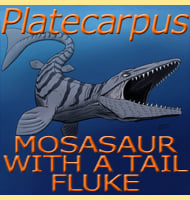Moanasaurus
In Depth Mosasaurs appear to have been some of the most common marine reptiles around New Zealand towards the end of the Cretaceous, and at up to twelve meters long, Moanasaurus was towards the larger end of the mosasaur size scale. Given its large size it’s a safe bet that Moanasaurus would have been a … Read more
